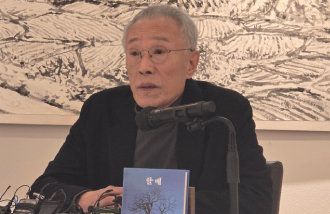Won-dollar rate rises to 1,409 won
Won-dollar rate rises to 1,409 won
Posted September. 23, 2022 07:50,
Updated September. 23, 2022 07:50
The won-dollar exchange rate exceeded the threshold of 1,400 won to the dollar for the first time since the 2008 Global Financial Crisis due to the U.S. Federal Reserve’s 3rd “giant step” of increasing its key interest rate by 0.75 percent points at one go. What’s worse, it implied that the two remaining Federal Open Market Committee (FOMC) meetings (November and December) this year will raise the key interest rate further by 1.25 percent points, leaving the global financial market in anxiety.
On Thursday, the won-dollar exchange rate recorded 1,409.7 won, up by 15.5 from the previous trading day, in the Seoul foreign exchange market. The closing exchange rate of 1,400 won was surpassed for the first time in 13.5 years since March 20, 2009, when it closed at 1,412.5 won. It even soared up to 1,413.4 won at midday Thursday.
Although the South Korean government and the foreign exchange authorities not only made verbal interventions officially in the market but also got practically involved in selling dollars to support the won, the market ended up breaching the psychologically important level of 1,400 to the dollar. With growing volatility across the foreign exchange market, the Financial Stress Index (FSI), a yardstick for judging how stressed out the global financial system is, last month recorded as high as 17.6, nearing the level of significant stress (over 22).
As the Fed took the 3rd “giant step” on Wednesday (local time), the U.S. key interest rate spiked from an annualized 2.25-2.50 percent to an annualized 3.0-3.25 percent. Compared to South Korea’s key interest rate of an annualized 2.5 percent, the uppermost rate of 3.25 percent is higher by 0.75 percent. As the Fed signaled another “giant step,” the global financial market was driven into a state of shock.
Based on point chart data on the Fed members’ outlook for the U.S. key interest rate, it will reach 4.4 percent on an annualized basis by the end of this year, which will go further up to an annualized 4.6 percent. Federal Reserve Chair Jerome Powell said in a press conference on Wednesday that despite some level of recovery in the supply chain, inflation still keeps high, adding that the Fed will not consider decreasing the key interest rate until it feels assured that inflation is on a downward path to the target of two percent. His message implied a subsequent significant increase in the key interest rate.
Shivering with the “giant step” nightmare, the global market is anxious about an economic slowdown, while a stronger dollar puts tremendous pressure on the market. The U.S. Dollar Index, a measure of the average value of the U.S. dollar compared to six major foreign currencies, reached the level of 111 to hit a 20-year high. As of Thursday, the dollar-yen exchange rate in the Tokyo foreign exchange market exceeded 145 yen for the first time in 24 years during intra-day trading.




![[단독]‘졸업전공 선택제’ 첫 실험… “국문과로 입학해 공대 졸업 가능”](https://dimg.donga.com/c/138/175/90/1/wps/NEWS/IMAGE/2025/12/10/132935521.1.jpg)


